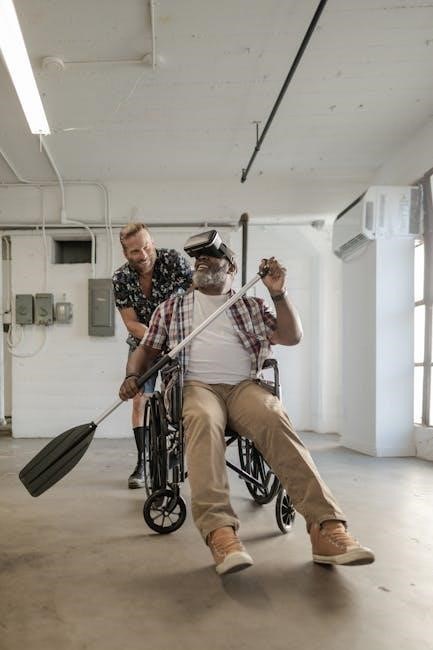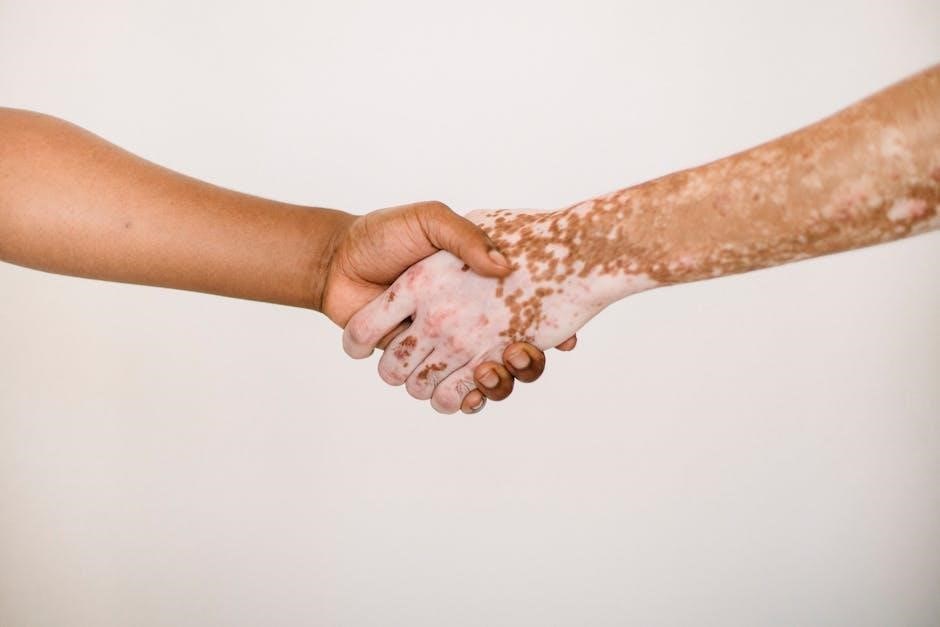STNR Reflex Integration Exercises: A Comprehensive Guide
Welcome! This guide provides a deep dive into STNR reflex integration exercises. We explore activities like Cat/Cow‚ tummy crawling‚ and bear walks. Discover how these exercises enhance neurological growth. Improve physical capabilities. Optimize learning. Address challenges associated with retained STNR effectively.
Understanding the STNR Reflex
The Symmetrical Tonic Neck Reflex (STNR) is a primitive reflex that emerges in infancy. It plays a crucial role in developing coordination. It typically integrates as a child grows‚ usually around the age of 9 to 11 months. Integration means the reflex becomes controlled by higher brain centers‚ allowing for more refined movements. However‚ if the STNR persists beyond this typical integration timeline‚ it can present various challenges.
Retained STNR can impact hand-eye coordination‚ making tasks like catching a ball or writing difficult. Children might struggle with copying from a board‚ as the head movement triggers postural instability. Sitting still can also be a challenge‚ as the retained reflex interferes with proper posture and balance.
Understanding the STNR is essential for recognizing its potential effects and implementing appropriate intervention strategies. Early identification and targeted exercises can help integrate the reflex‚ mitigating its impact on a child’s development. This guide will further explore effective STNR integration exercises to support optimal neurological and physical development.Remember‚ consulting with a qualified professional is crucial.
What is the Symmetrical Tonic Neck Reflex (STNR)?
The Symmetrical Tonic Neck Reflex‚ or STNR‚ is a primitive reflex. It emerges during infancy to aid in early motor development. Specifically‚ it assists the baby in learning to lift its head and upper body. This reflex is naturally triggered by head movements‚ specifically flexion (bending forward) and extension (tilting backward). When the head flexes forward‚ the arms tend to bend‚ and the legs extend. Conversely‚ when the head extends backward‚ the arms straighten‚ and the legs bend.
This reflex is essential in preparing the infant for crawling‚ helping them transition from lying on their tummy to getting up on their hands and knees. As the child matures‚ the STNR should naturally integrate‚ typically around 9-11 months of age. Integration means the reflex is no longer dominant. It is controlled by higher brain centers. This allows for more coordinated and voluntary movements.
If the STNR persists beyond its typical integration period‚ it’s considered a retained reflex. This retention can lead to various difficulties. These may include challenges with posture‚ hand-eye coordination‚ and learning. Understanding the STNR’s role and its typical integration timeline is vital. It helps in identifying potential issues and guiding appropriate interventions.
Typical Integration Timeline of STNR
The Symmetrical Tonic Neck Reflex (STNR) follows a predictable integration timeline; It plays a critical role in early development. Emerging in utero‚ the STNR becomes active shortly after birth. It peaks around 6-9 months of age. During this period‚ the reflex facilitates the infant’s ability to lift their head and upper body while on their hands and knees. This prepares them for crawling.
Ideally‚ the STNR should begin to integrate‚ or become inhibited‚ between 9 and 11 months of age. Integration signifies that the reflex is no longer the primary driver of movement. Higher-level brain functions take over. This allows for more controlled and voluntary actions. As the STNR integrates‚ the infant develops improved coordination. They also gain postural control. They can now transition to more complex movements like crawling and‚ eventually‚ walking.
Complete integration is typically expected by the time a child reaches 12 months. However‚ variations can occur within normal developmental ranges. If the STNR remains active beyond this period‚ it’s considered retained. This retention can impact various skills. These skills include hand-eye coordination‚ posture‚ and sitting still. Early identification and intervention are crucial. This helps address any challenges associated with a retained STNR. It supports optimal development.

Identifying Retained STNR: Signs and Symptoms
Recognizing a retained STNR involves observing specific signs. These signs include difficulties with hand-eye coordination. Challenges copying from a board may also be present. Furthermore‚ the child may struggle to sit still. These indicators suggest the reflex’s continued influence on motor skills.
Impact on Hand-Eye Coordination
Retained STNR can significantly impact hand-eye coordination. This impact manifests in various ways‚ affecting daily activities and academic performance. Children with a retained STNR might find it difficult to track moving objects smoothly‚ hindering their ability to catch a ball or follow a line of text while reading. The disconnection between head movements and visual tracking creates challenges in tasks requiring precise coordination.
Writing can be particularly problematic. As the child looks down at their paper‚ the STNR can cause them to slump forward‚ disrupting their posture and affecting their grip on the pencil. This‚ in turn‚ makes handwriting difficult and tiring. Similarly‚ activities like threading beads or using scissors become more challenging. The child’s movements may appear clumsy or uncoordinated. They may struggle to perform tasks that require simultaneous visual and motor control.
Moreover‚ participation in sports and games may be affected. The child might have trouble hitting a target or coordinating their movements with other players. This can lead to frustration and a reluctance to engage in physical activities. Addressing the retained STNR through targeted exercises can significantly improve hand-eye coordination. This enhancement allows the child to participate more effectively in various activities‚ boosting their confidence and overall development. The integration of the STNR facilitates smoother‚ more coordinated movements.
Challenges with Copying from a Board

Children with a retained Symmetrical Tonic Neck Reflex (STNR) often face significant challenges when copying information from a board. This seemingly simple task requires a complex interplay of visual tracking‚ postural control‚ and fine motor skills. When the STNR is still active‚ the act of looking up at the board and then down at the paper triggers the reflex. This can lead to an involuntary change in posture‚ making it difficult to maintain a stable position while copying.
The child may find themselves slouching or hunching over their desk‚ which disrupts their focus and makes it harder to see the board clearly. The constant shifting of posture can also cause fatigue and discomfort. Furthermore‚ the act of looking up and down can create a disconnect between what the child sees on the board and what they are able to write on their paper. They might miss details‚ misspell words‚ or struggle to organize their work effectively.
These difficulties can lead to frustration and a decrease in academic performance. The child may become reluctant to participate in class activities that involve copying. They may also experience anxiety about their ability to keep up with their peers. Over time‚ these challenges can impact their self-esteem and motivation to learn. Targeted STNR integration exercises can help to mitigate these difficulties. These exercises aim to inhibit the reflex. They promote better postural control and improve the child’s ability to coordinate their movements while copying from a board.
Difficulties with Sitting Still
Children exhibiting a retained Symmetrical Tonic Neck Reflex (STNR) often struggle with the seemingly simple task of sitting still. This difficulty stems from the reflex’s influence on posture and muscle tone; When the STNR is active‚ movements of the head trigger corresponding movements in the arms and legs. For instance‚ tilting the head forward can cause the arms to bend and the legs to straighten‚ while tilting the head backward can produce the opposite effect.
This involuntary response makes it challenging for a child to maintain a stable‚ upright posture while seated. They may fidget‚ squirm‚ or constantly shift their weight as their body attempts to compensate for the reflex. The need to control these involuntary movements can be exhausting. It diverts their attention away from the task at hand. This can lead to difficulties with concentration and focus in the classroom or during other activities that require sustained attention.
Furthermore‚ the constant movement can be disruptive to others around them‚ leading to social challenges and feelings of frustration or isolation. It’s important to recognize that this difficulty is not due to a lack of willpower or intentional misbehavior. It’s a neurological issue that can be addressed through targeted STNR integration exercises. These exercises aim to inhibit the reflex and promote better postural control‚ allowing the child to sit still. They can focus without the distraction of involuntary movements. With consistent practice‚ these exercises can help to improve concentration‚ reduce fidgeting‚ and enhance overall classroom performance.

Effective STNR Integration Exercises
This section introduces effective STNR integration exercises. Explore the Cat/Cow exercise‚ tummy crawling‚ and bear walks. These activities help inhibit the STNR reflex. They also promote improved coordination. Enhance posture. Support overall neurological development. Consistent practice is key for optimal results.
Cat/Cow Exercise: Step-by-Step Guide
The Cat/Cow exercise effectively targets the Symmetrical Tonic Neck Reflex (STNR). Begin on your hands and knees in a tabletop position. Ensure your hands are directly beneath your shoulders. Your knees should be directly beneath your hips. Distribute your weight evenly. Start with a neutral spine.
For the Cow pose‚ inhale deeply. Gently drop your belly towards the floor. Simultaneously‚ lift your chest and tailbone towards the ceiling. Look upwards‚ extending your neck. Hold this position for 3 seconds. Feel the stretch along your spine.
Transition to the Cat pose on your next exhale. Round your spine towards the ceiling. Tuck your tailbone. Draw your pubic bone forward. Release your head towards the floor. Do not force your chin to your chest. Hold this position for 3 seconds. Feel the stretch in your upper back.
Continue alternating between the Cat and Cow poses. Coordinate your breath with each movement. Inhale into Cow. Exhale into Cat. Perform 10 repetitions‚ completing 1-2 sets per day. Consistency is vital for STNR integration.
Ensure your arms remain straight throughout the exercise. Avoid shifting your hips side to side or front to back. Focus on controlled‚ deliberate movements. Provide tactile cues if needed to ensure proper form. This exercise promotes spinal flexibility. It also supports STNR integration effectively. Remember to maintain a steady breathing pattern;
Crawling on Tummy: Promoting Integration Through Movement
Crawling on the tummy is a powerful method for promoting STNR reflex integration through movement. This exercise encourages coordinated limb movements. It also strengthens core muscles. Begin by having the child lie prone on their stomach. Ensure they have enough space to move freely. The surface should be relatively smooth to facilitate movement.
Instruct the child to use their forearms to propel themselves forward. Encourage them to engage their core muscles. This helps in maintaining stability. Their legs should drag behind them‚ providing additional propulsion. It’s crucial to ensure they are not arching their back excessively;
Start with short distances. Gradually increase the distance as the child gains strength and coordination. Encourage them to crawl in a straight line. This helps in developing symmetrical movements. Provide gentle guidance as needed. Tactile cues can be helpful in guiding their movements.
Crawling on the tummy helps integrate the STNR by promoting the reciprocal movements of the limbs. This activity also enhances proprioceptive awareness. It improves body awareness. It can be incorporated into daily routines. Make it a fun and engaging activity.
Ensure the child is comfortable throughout the exercise. Avoid forcing them to crawl if they are experiencing discomfort. Observe their movements closely. Look for signs of fatigue or strain. This activity should be performed regularly to achieve optimal results in integrating the STNR reflex;
Bear Walks: Strengthening and Coordination
Bear walks are an excellent exercise for strengthening muscles. They also improve coordination. These are essential for STNR reflex integration. This activity engages multiple muscle groups. It promotes symmetrical movements. Begin by instructing the child to place their hands and feet on the ground. Their knees and elbows should be straight. Their bottom should be raised towards the ceiling.
Encourage the child to move forward by taking small steps with their hands and feet. They should maintain a straight line from their hands to their feet; This ensures proper form and engagement of the core muscles. The head should be in line with the spine. This prevents neck strain.
Start with short distances. Gradually increase the distance as the child becomes more comfortable. Encourage them to maintain a steady pace. Avoid rushing through the exercise. Focus on controlled movements. This helps in developing coordination.

Bear walks help integrate the STNR by promoting weight-bearing through the limbs. This strengthens the muscles. It also enhances proprioceptive input. This improves body awareness. This activity can be modified to suit the child’s abilities. Increase the challenge by adding obstacles.
Ensure the child is performing the exercise correctly. Provide guidance as needed. Monitor their form closely. Look for signs of fatigue. Encourage them to take breaks. This prevents overexertion. Bear walks should be incorporated into a regular exercise routine. This promotes STNR reflex integration. It improves overall strength and coordination.
